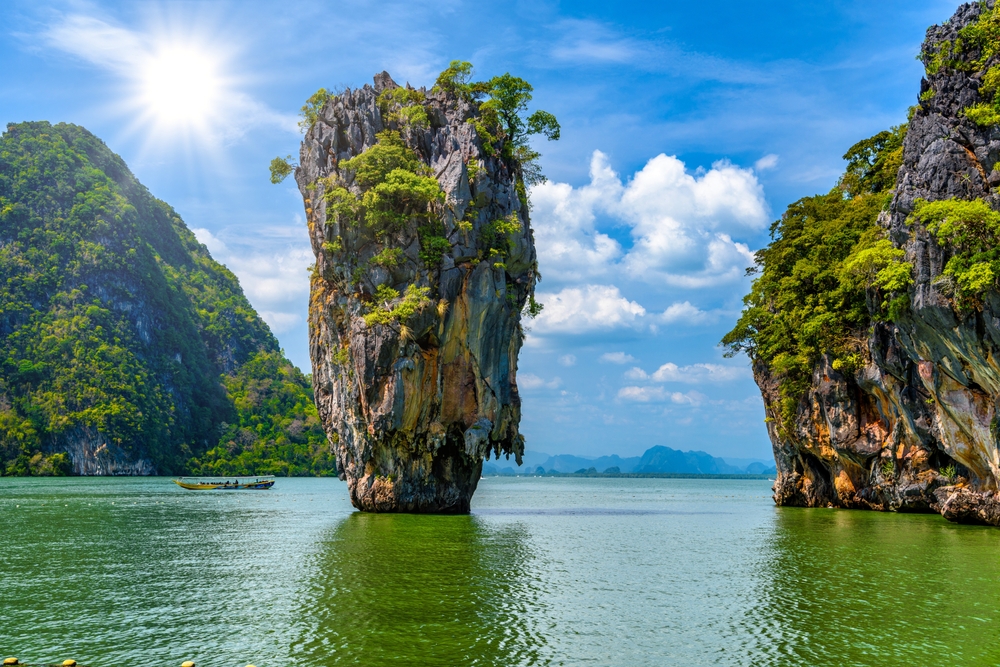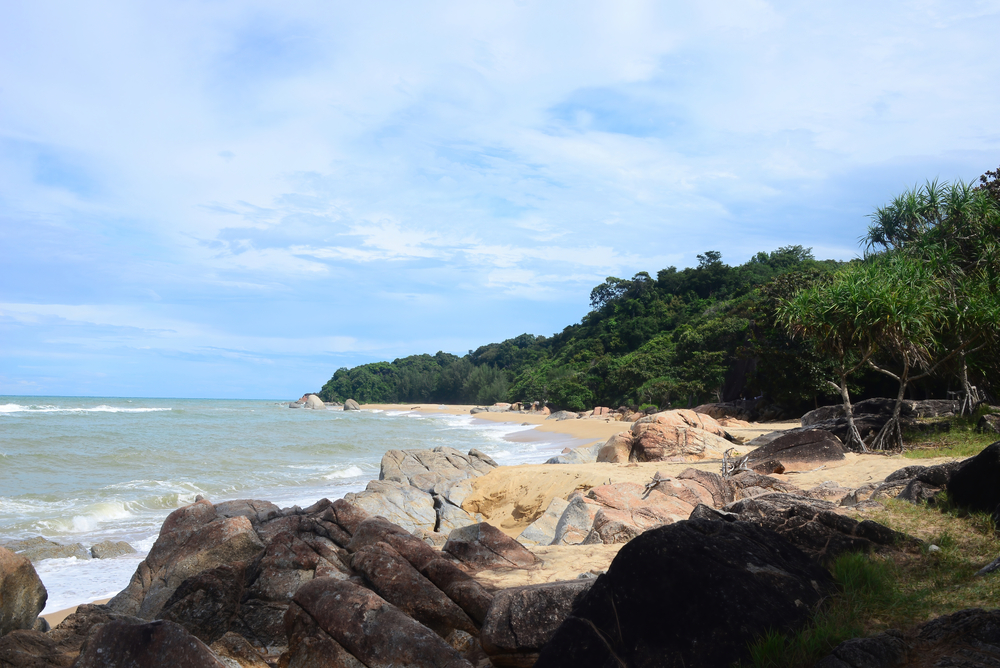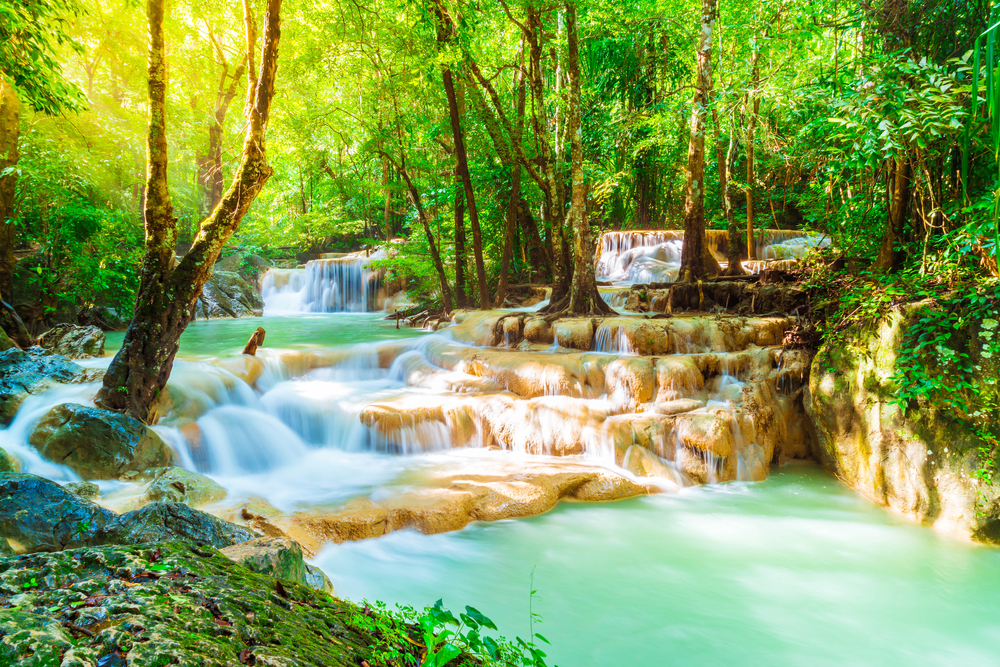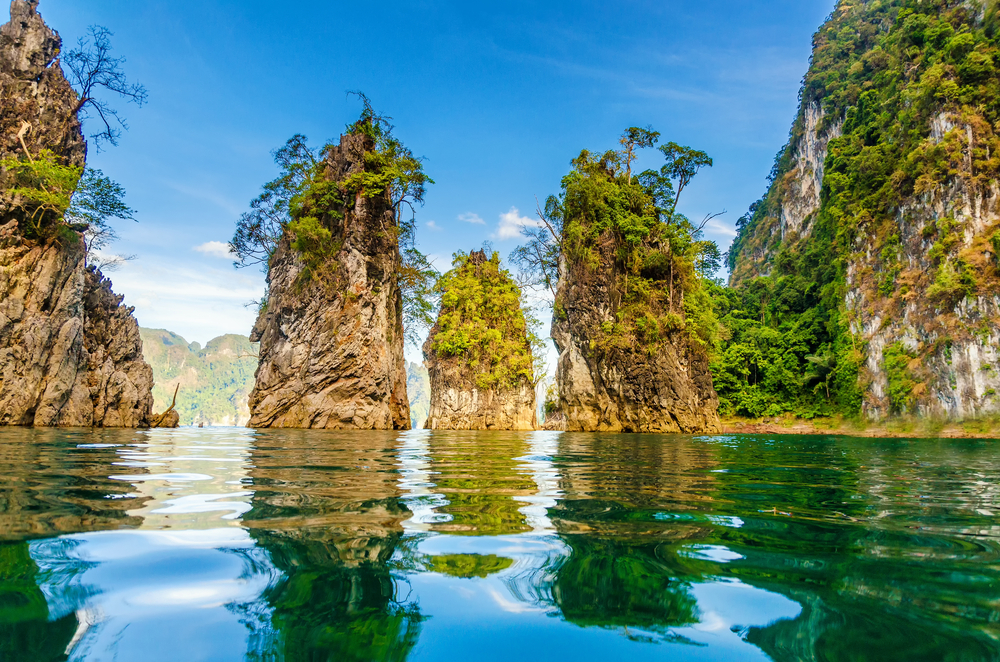Ao Phang Nga Overview
Ao Phang Nga National Park, or อ่าวพังงา in Thai, is a stunning marine national park located in southern Thailand’s Phang Nga Province. Spanning approximately 154 square miles (400 square kilometers), the park is an iconic destination famed for its dramatic limestone karsts and emerald-green waters. Established in 1981, the park encompasses coastal mangroves, lush islands, and unique geological formations, offering a rich and diverse environment for exploration and conservation.
The terrain of Ao Phang Nga National Park is its most remarkable feature. It is characterized by towering limestone cliffs and islands rising steeply from the water, creating a surreal and captivating seascape. Among its many islands, Ko Tapu, famously known as “James Bond Island,” is a prominent attraction, recognized for its role in the 1974 movie The Man with the Golden Gun. The park also includes vast stretches of mangrove forests, an essential ecosystem that stabilizes coastlines and supports marine life. Caves, grottoes, and lagoons, such as the enchanting Tham Lot, add to the park’s allure, offering breathtaking experiences for visitors exploring by kayak or boat.
Wildlife thrives in Ao Phang Nga National Park, both above and below the water. The mangroves and coastal forests shelter a variety of bird species, including kingfishers, herons, and Brahminy kites. Mammals such as long-tailed macaques and fishing cats inhabit the region, while reptiles, including monitor lizards, are also frequently seen. Beneath the waters, vibrant marine life flourishes, including coral reefs, sea turtles, and schools of tropical fish, contributing to the park’s importance as a marine biodiversity hotspot.
Ao Phang Nga National Park is celebrated for its natural beauty and iconic features that attract visitors worldwide. Popular activities include boat tours that wind through its maze of islands and sea caves, allowing visitors to marvel at the towering limestone cliffs and tranquil lagoons. Kayaking is another favorite activity, offering a more intimate experience of the park’s hidden caves and secluded beaches. Snorkeling and diving enthusiasts are drawn to the park’s underwater wonders, while nature lovers can enjoy birdwatching and exploring the mangroves.
The park faces conservation challenges, including the impact of tourism and coastal development. Efforts to protect the fragile ecosystems include limiting visitor access to sensitive areas, educating tourists about sustainable practices, and conducting mangrove restoration projects. These measures have contributed to preserving the park’s unique landscapes and biodiversity. Ao Phang Nga is a testament to Thailand’s commitment to conserving its natural heritage while allowing people to appreciate its extraordinary beauty.













































































